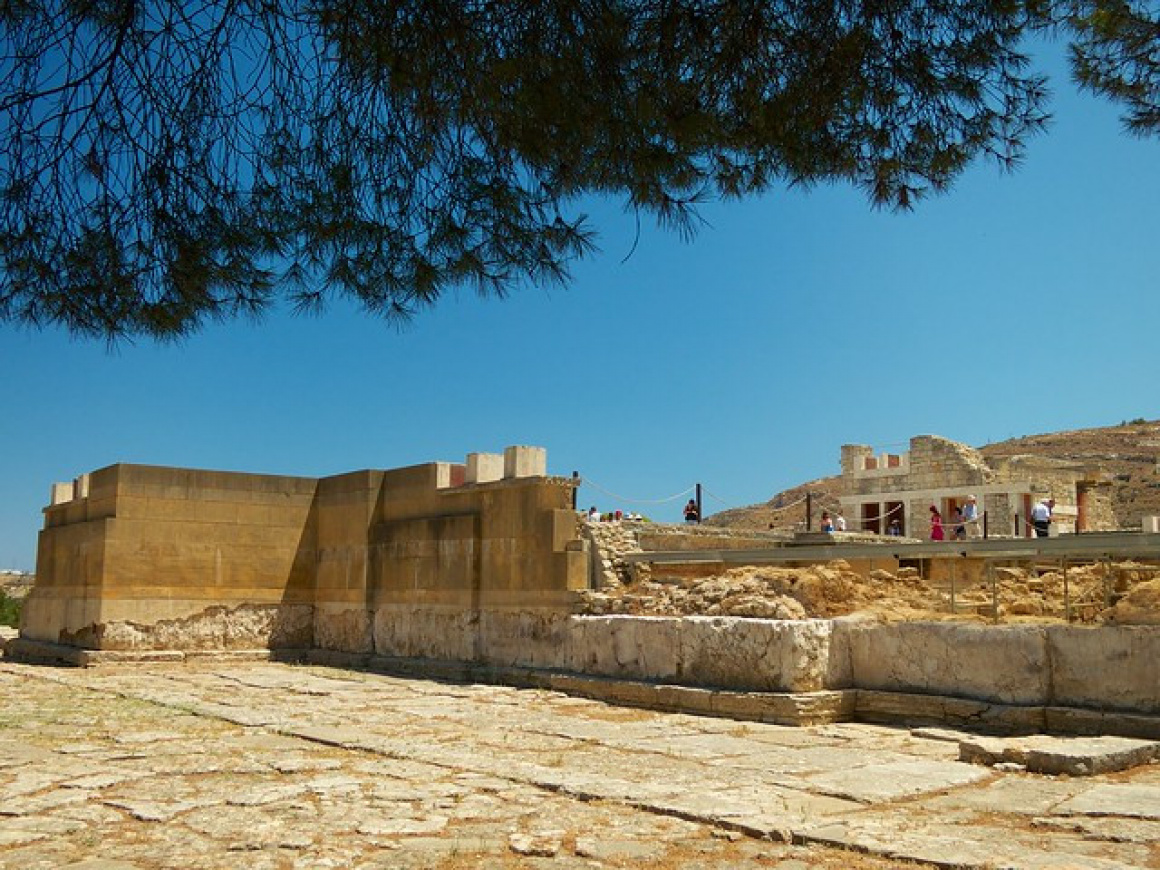Crete is often called the cradle of European civilisation, and for good reason: this island's soil holds remnants of cultures spanning over 5,000 years. From the enigmatic palaces of the Minoans to Classical Greek temples, and from Roman cities to Byzantine basilicas, Crete is essentially an open‐air museum of human history. Exploring Crete's archaeological sites is like unraveling a rich tapestry – each thread a different era, people, and story. Many visitors come knowing about the famous Palace of Knossos, legendary home of the Minotaur's Labyrinth, but that's just the beginning. In truth, the island is dotted with ruins large and small, each with its own allure. What's remarkable is how accessible and varied these sites are: you can wander an ancient Minoan town overlooking the sea in the morning, stroll through a Roman amphitheatre by afternoon, and catch sunset atop a Hellenistic city's acropolis by evening. This guide will lead you through Crete's archaeological wonders – both the must-sees and the hidden gems – blending historical insight with practical tips for the modern explorer.
Crete's most distinctive ancient culture was the Minoan civilisation (c. 2000–1400 BC), often regarded as Europe's first high civilisation. The Minoans left behind monumental palaces, vibrant frescoes, and mysterious scripts (Linear A and B), traces of a sophisticated society that amazed the archaeologists who first unearthed them. Visiting Minoan sites offers a glimpse into a Bronze Age world of myth and legend.
Knossos:
No list can start elsewhere. The Palace of Knossos, just 5 km south of Heraklion, is Crete's premier archaeological attraction – an expansive complex that was the ceremonial and political centre of Minoan Crete. According to myth, this is where King Minos had Daedalus construct a labyrinth to imprison the Minotaur. The site we see was excavated and controversially reconstructed by Sir Arthur Evans in the early 20th century. As you wander its courtyards and corridors, you'll encounter Evans's imaginative reconstructions: red columns and restored frescoes (like the famous Bull-Leaping scene). Highlights include the Throne Room with its gypsum seat (possibly a royal or ritual throne), the Queen's Megaron with a beautiful dolphin fresco, and the central court where ceremonies may have taken place. While Evans's reconstructions can be debated, there's no denying the thrill of walking through a place that was bustling with life 3,500 years ago. Arrive early in summer to avoid crowds and midday heat. A combined ticket with the Heraklion Archaeological Museum is available – a great idea, since many treasures from Knossos (like the original frescoes, the Snake Goddess figurines, and the enigmatic Phaistos Disc) are displayed there.
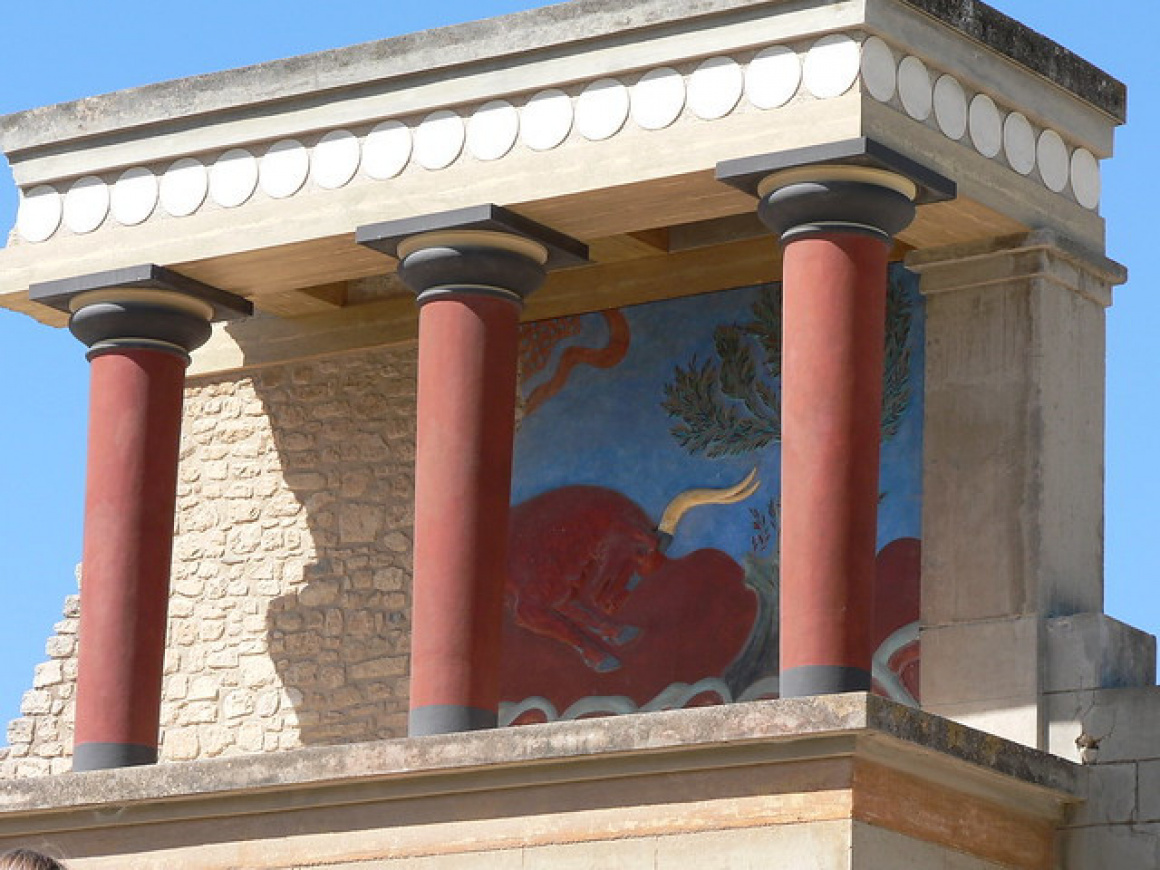
 'Knossos' - Attribution: lostajy
'Knossos' - Attribution: lostajyPhaistos (Phaestos):
In the south central part of Crete, on a hill overlooking the fertile Mesara Plain, lie the ruins of Phaistos Palace, second in size and importance only to Knossos. Phaistos has a stunning location – the view from its grand staircase across the plains to Mount Ida is unforgettable. This was likely the seat of another king in Minoan times. The site is less reconstructed than Knossos, which many appreciate; you see original structures in a more natural state. Don't miss the massive central court, the royal apartments (with a similar layout to Knossos's), and the unique theatral area with step-like benches possibly used for public gatherings. It was here that the famous Phaistos Disc was found – a fired clay disc imprinted with mysterious symbols; it remains one of archaeology's unsolved puzzles, now on display in the Heraklion Museum. Phaistos has a serene vibe with far fewer tourists than Knossos, letting you really soak up the atmosphere. A small museum shop and café by the entrance offer respite under olive trees.
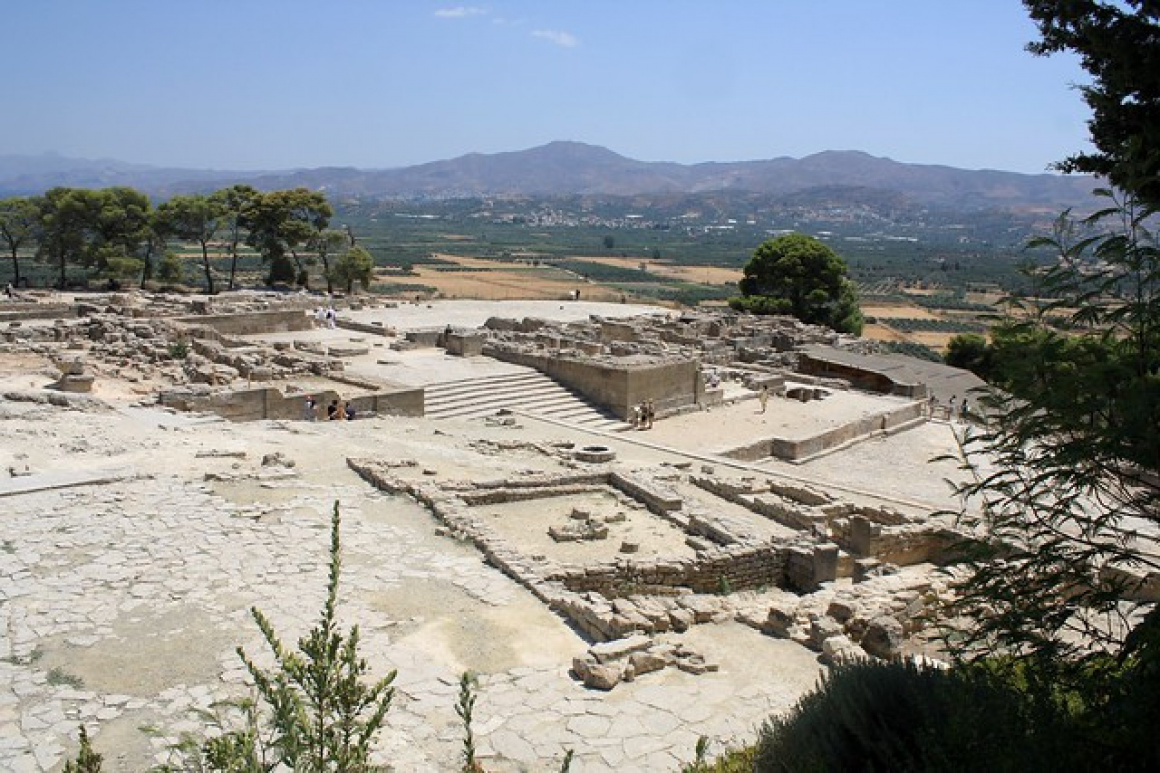
 'Palace of Phaestos' - Attribution: skuds
'Palace of Phaestos' - Attribution: skudsMalia:
On the north shore east of Heraklion, Malia Palace was another major Minoan centre. Today it's an open site of foundation-level ruins; the palace was destroyed and not rebuilt, giving archaeologists a clearer snapshot of its final phase. Malia is famous for the solid-gold Bee Pendant (now in the Heraklion Museum) and other rich finds, indicating its wealth. When you visit, you can see a sizable central court, storage magazines that once housed pithoi (giant storage jars), and even the remains of an intricate drainage system – a marvel of Minoan engineering. A short walk away is the Malian Prepalatial cemetery at Chrysolakkos, where exquisite jewellery (like the Bee Pendant) was unearthed.
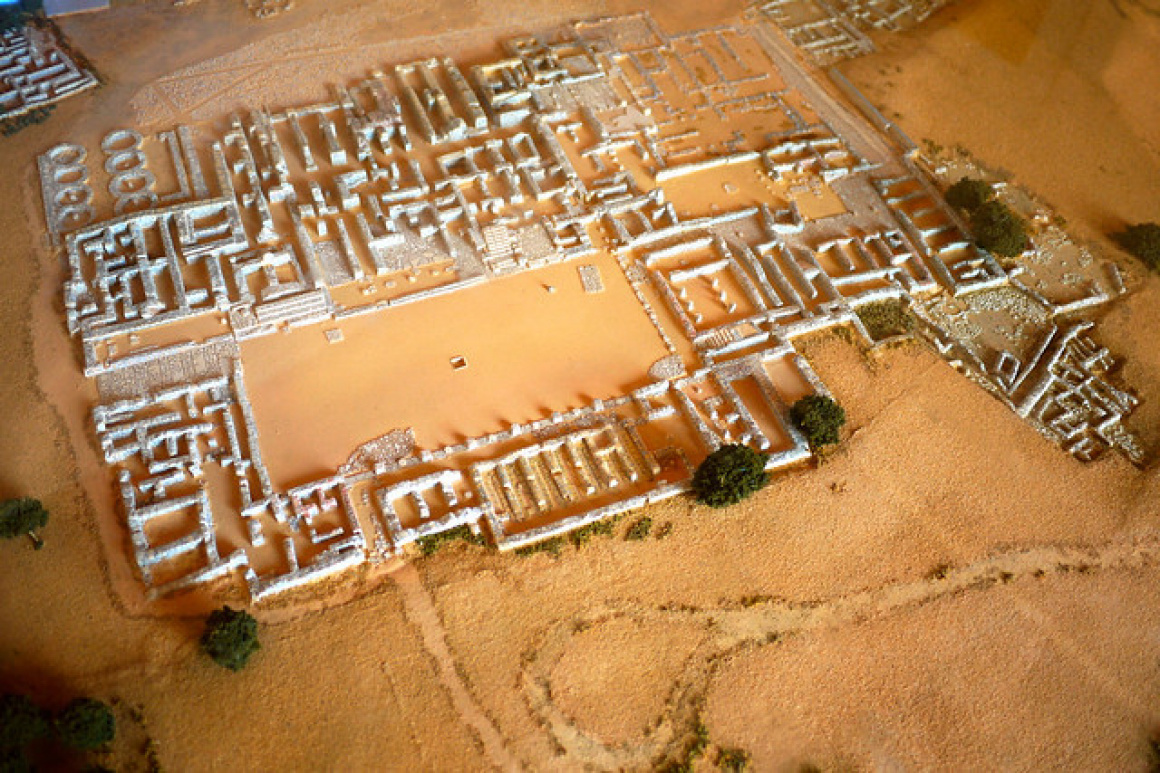
 '12406' - Attribution: Panegyrics of Granovetter
'12406' - Attribution: Panegyrics of GranovetterZakros:
For the truly adventurous, Kato Zakros Palace on the far eastern tip of Crete rewards the effort of getting there. It's the smallest of the main palaces, excavated more recently, and wonderfully remote – situated a few hundred metres from the sea near a quiet village. The drive or hike (you can trek the beautiful “Valley of the Dead” gorge to reach it) is part of the experience. Zakros provides insight into Minoan trade, with its large number of workshops and storerooms; many exotic materials like ivory and copper were found here, suggesting it was a key trading port with links to Egypt and the Near East.
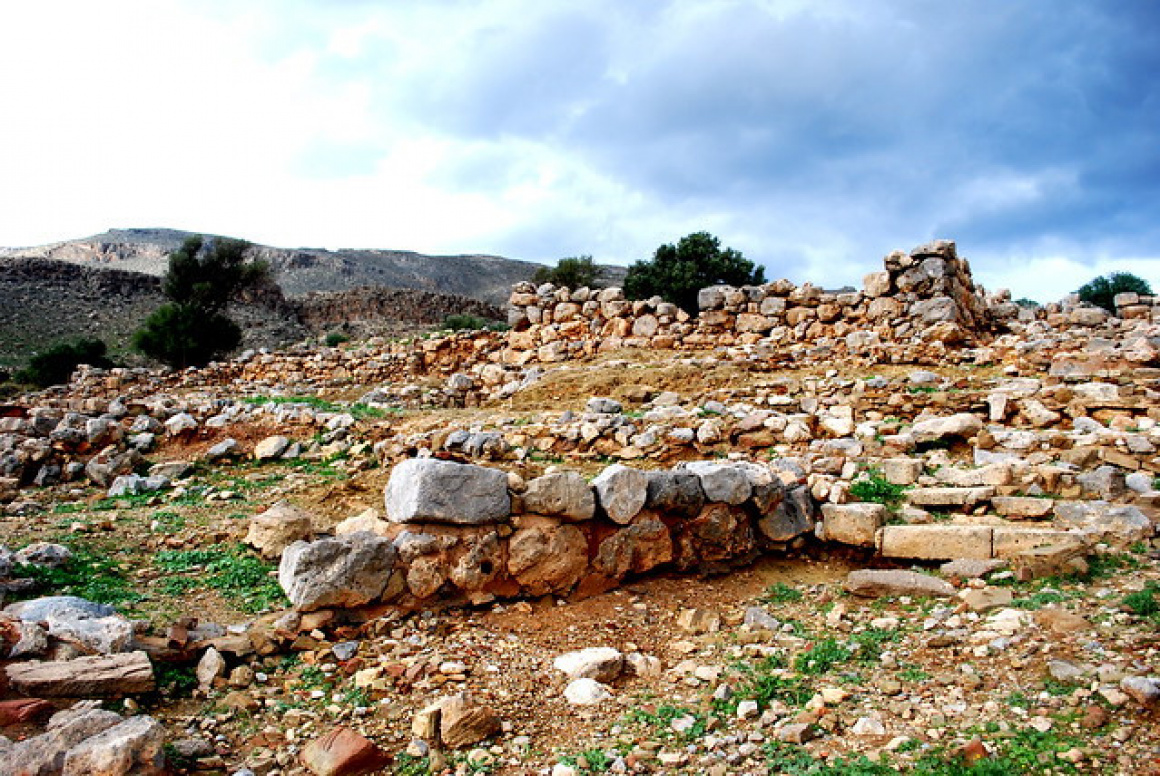
 '2446' - Attribution: Panegyrics of Granovetter
'2446' - Attribution: Panegyrics of GranovetterBeyond the palaces, numerous other Minoan sites pepper Crete: Mochlos and Gournia (well-preserved small towns in eastern Crete), Galatas (a newer excavation of a “mini-palace”), and peak sanctuaries like Juktas and Psychtro Cave (Diktaean Cave) which blend myth – Psychro is where Zeus was born, according to myth – and archaeology (Minoans left offerings there). These sites underscore that Minoan Crete was a complex tapestry of interconnected settlements.
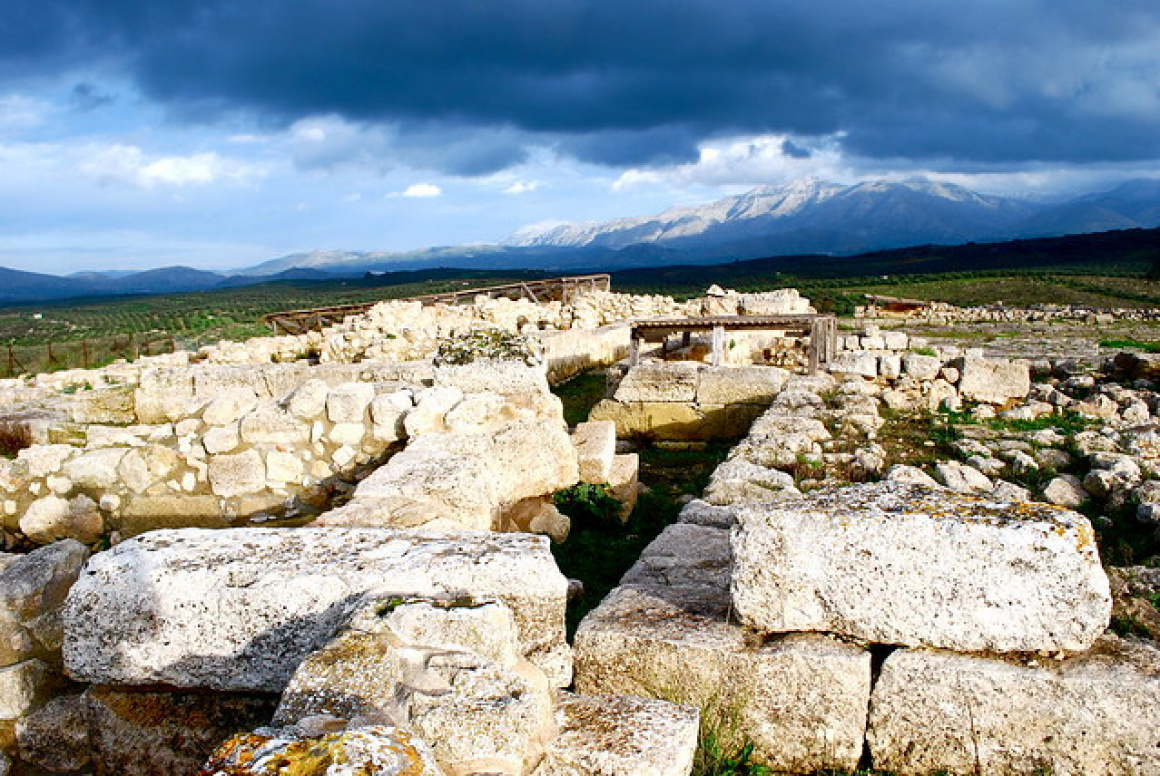
 '2822' - Attribution: Panegyrics of Granovetter
'2822' - Attribution: Panegyrics of GranovetterWhen visiting these ancient places, take a moment to envision daily life: the storerooms full of olive oil and wine, the bustling courts where perhaps festivals or bull-leaping events occurred, the scribes pressing Linear A script into clay tablets to record inventories. Crete's Minoan sites are not just stones; they are the stage upon which Europe's first advanced society unfolded.
Gortyn (Gortyna):
Located in south-central Crete in the Messara plain, Gortyn is a must-see for fans of Greco-Roman history. Gortyn was a powerful city that spanned Greek and Roman periods, eventually becoming the Roman capital of Crete and Cyrenaica. The site's star attraction is the Great Law Code of Gortyn, an extensive 5th-century BC inscription carved on a circular wall. These stones display Europe's oldest surviving legal code – written in boustrophedon style (alternating direction each line) – detailing laws on property, marriage, slaves, etc. Stand before it and literally read (with the help of translations on signs) ancient Dorian Greek laws, an experience that brings you face to face with daily life concerns 2,500 years ago. Also at Gortyn are remains of a Roman Odeon (music theatre), a basilica of St. Titus (Crete's first Christian church, 6th century AD), and scattered foundations of temples. A short walk under olive groves brings you to the mythological plane tree where Zeus, in bull form, supposedly mated with Europa – legend says its leaves stay green year-round. Gortyn's blend of classical and Roman ruins in a bucolic setting makes it very special. Gortyn offers an immersive dive into ancient law and society.
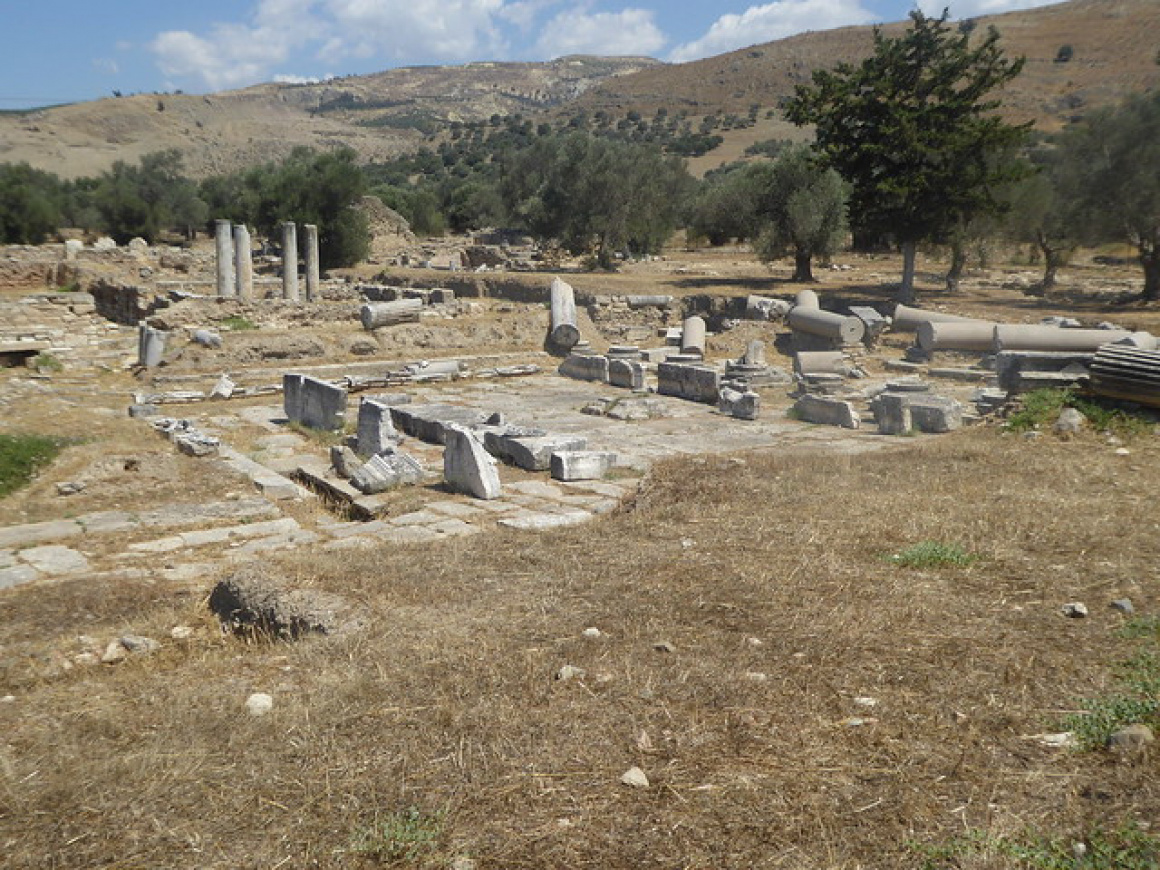
 'Gortyn, Crete' - Attribution: Hyspaosines
'Gortyn, Crete' - Attribution: HyspaosinesEleutherna (Eleftherna):
High in the foothills of Mt. Ida, inland Rethymno, the ancient city of Eleutherna has been yielding treasures that have reshaped understanding of Crete's “Dark Ages” and Archaic period (c. 900-600 BC). Eleutherna was an important polis and the relatively new Eleutherna Archaeological Museum nearby (opened 2016, the first on-site museum in Crete) enhances the experience. The site itself has remains of a Greek city – Hellenistic walls and towers, a bridge, house foundations – but the biggest draw are the finds from the Orthi Petra necropolis. Archaeologists uncovered richly furnished tombs of warriors and women from around the 8th century BC, some possibly linked to Homeric customs (one grave dubbed the “princess’s tomb” contained a gold jewellery hoard and the remains of women who may have sacrificed themselves, evoking the Iliad's tales). These finds are showcased in the museum, including a captivating reconstruction of one burial. Eleutherna also boasts a classical era tower and city gate you can hike to, and Roman cisterns. The site, with views to the sea, is atmospheric. Pairing Eleutherna with a visit to the nearby Arkadi Monastery makes for a diverse historical day.
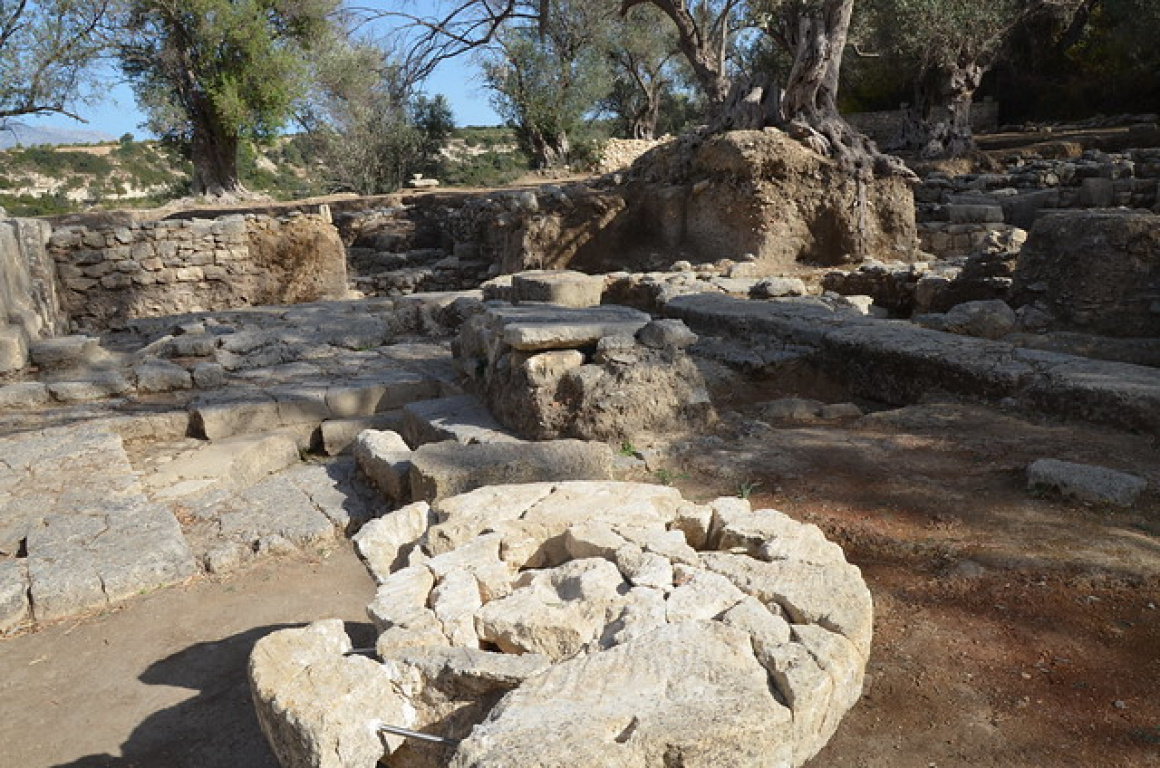
 'Eleutherna, Crete' - Attribution: Following Hadrian
'Eleutherna, Crete' - Attribution: Following HadrianLato:
If you love evocative ruins without crowds, head to Lato, a beautifully preserved Dorian city near Agios Nikolaos (Central-East Crete). Set amidst rugged terrain with panoramic views of Mirabello Bay, Lato has an almost mystic quiet. You can wander through the ancient city's central Agora (town square) with remnants of a small temple, climb up to what was likely the Prytaneion (council house) with its intact stone threshold, and even sit on the steps of the little theatre area. The city thrived around the 4th century BC. From the peak (the acropolis) the vista is magnificent. Lato's compactness and state of preservation give a real sense of an ordinary Greek city-state – not a palace, not a Roman metropolis, but a living town.
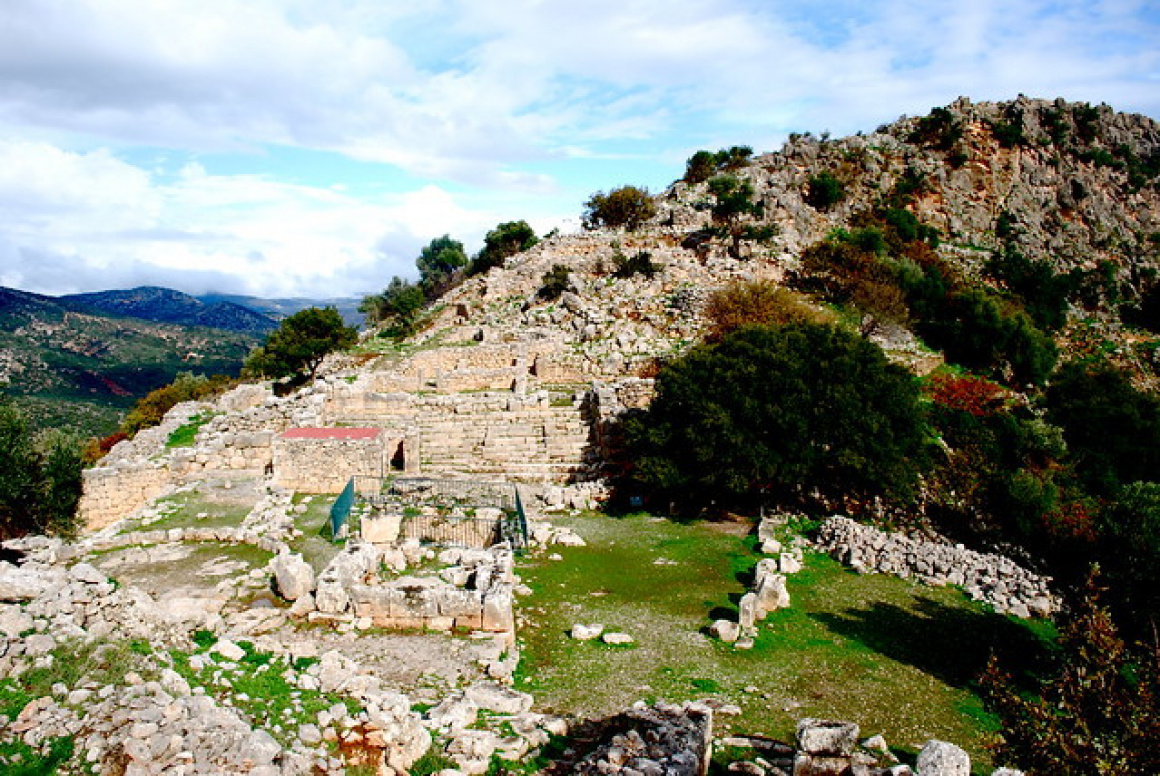
 '2327' - Attribution: Panegyrics of Granovetter
'2327' - Attribution: Panegyrics of GranovetterAptera:
Overlooking Souda Bay near Chania, Aptera was a powerful city-state from Classical through Roman times. The site is expansive and varied: on one end, huge vaulted Roman cisterns (you can enter these long arched chambers that stored water for the city), on another, a small Greek theatre partially restored. In between, the scant remains of temples and public buildings, and even a Turkish fortress from much later (19th century) at the far end of the hill. The blending of layers at Aptera is fascinating – the name even recalls the myth of the Sirens losing their feathers ('aptera' means wingless) here after a music contest with the Muses. Aptera also offers views of both Souda Bay to the north and the White Mountains to the south. It's easily accessible by road and often very quiet.
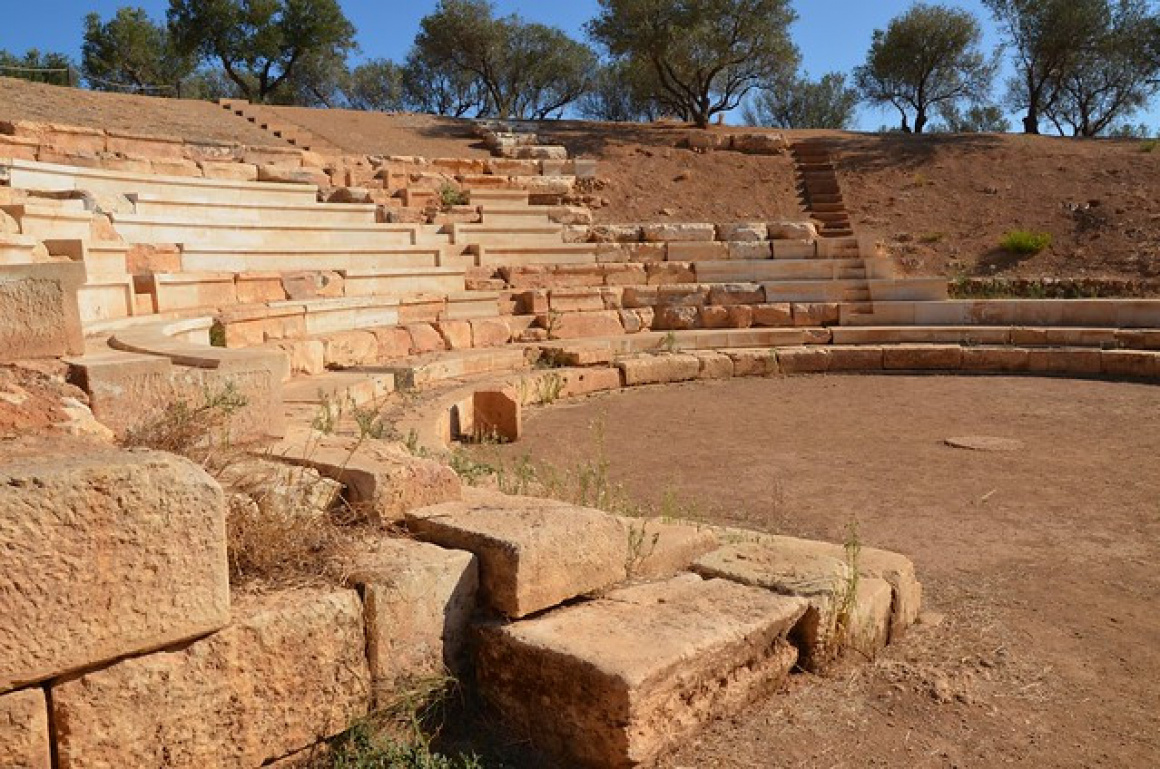
 'Aptera, Crete' - Attribution: Following Hadrian
'Aptera, Crete' - Attribution: Following HadrianOther noteworthy mentions:
Exploring these sites, you walk in the footsteps of ancient Cretans – people who were traders, farmers, soldiers, and citizens of their poleis. Crete's role in classical Greece was somewhat peripheral but these ruins prove that urban life here was rich and connected. Many cities minted their own coins (Heraklion Museum has displays of coins from Knossos, Gortyn, etc., showing symbols like the Minotaur or Zeus). Some were known for specific exports: Cretan wine, mercenaries, or even laws (as the Gortyn Code demonstrates). When at Gortyn's law code wall or Eleutherna's museum, consider that the first written laws in Europe were here on Crete, and the island's influence extends to the very concept of law-governed society.
Crete eventually fell under Roman rule in 67 BC and remained part of the Roman (and later Eastern Roman/Byzantine) Empires for many centuries. The Roman period sites often overlap with Greek ones (e.g., Roman Gortyn as mentioned). But there are standalone remains worth noting, and Byzantine-era archaeology tends to be ecclesiastical (early churches, mosaics).
Roman Gortyn:
Already covered above, Gortyn flourished in Roman times – it had a population perhaps of 50,000, boasting a Praetorium (governor's palace) and many statues (some in the Heraklion Museum). Only a fraction is excavated, but you can see mosaics peeking through the grass and imagine colonnaded streets. The immense basilica of St. Titus at Gortyn shows the transition to Christianity – with portions of its marble floor and pillars still standing, it's one of Crete's most important early Christian sites.
Villa Dionysos (Knossos):
Not far from the Minoan palace of Knossos, you can visit the remnants of an opulent Roman villa from the 2nd or 3rd century AD (with separate admission). Dubbed “Villa Dionysos” after the stunning mosaics of Dionysus found in situ, it has several colourful mosaic floors depicting mythological scenes – a treat for art lovers. This demonstrates how the Knossos area remained affluent into Roman times.
Early Christian Basilicas:
In many coastal areas, you'll find ruins of early Christian (5th-6th century AD) basilicas with portions of mosaic floors still intact. For example, the basilica of Panormos (north coast) or at Elounda (Olous) where a sunken ancient city lies, some mosaic floor sections of the early church can be seen near the shore. These tell of the spread of Christianity and urban life in late antiquity.
Byzantine Fortresses & Churches:
While much was overbuilt later by Venetians/Ottomans, some Byzantine fortifications remain – one example is the ruined city of Lappa (Argyroupoli) which has Roman and Byzantine layers and nearby ancient springs with carved niches. Another is Kazarma fortress in Sitia (originally Byzantine, then rebuilt by Venetians). And the countryside is peppered with tiny Byzantine chapels (many still in use by villages) that aren't “sites” with tickets, but often have medieval frescoes if you can get the key.
Plan by Region:
Crete is large, so it's wise to cluster sites by area. For instance, if you base in Heraklion, Knossos, Malia, Phaistos (about 1 hour drive), and Gortyn (1.5 hour) are reachable. If in Chania, focus on Aptera, Polyrrhenia, maybe Eleutherna (2 hours). Rethymno base: Eleutherna, Gortyn (a bit far), Phaistos (a drive through lovely Amari valley). Agios Nikolaos base: Lato, Gournia, Zakros (a long but scenic drive), maybe Malia.
Time of Day & Season:
In summer, aim for early morning or late afternoon visits to avoid the heat and tour bus crowds (especially for Knossos and Phaistos). Many sites have little shade – a hat, water, and sunscreen are essential. In winter (off-season), the sites are wonderfully empty and the weather mild, but check operating hours as some close earlier or may even shut on certain days.
Tickets & Passes:
The major sites like Knossos, Phaistos, and the Heraklion Museum offer a combined ticket that saves a bit. There isn't a single island-wide pass, but admission fees are generally modest (2 to 6 euros for many sites, a bit more for Knossos which is ~15 euros but includes museum).
Guides & Info:
Consider hiring a guide especially at Knossos – it brings the place alive (just ensure they are licensed). For self-guiding, a good guidebook or even printouts of certain Wikipedia pages can help. Many sites have information boards detailing key points (e.g., Gortyn has a board translating parts of the Law Code). The new Eleutherna Museum is very informative with English texts.
Off the Beaten Track:
Don't shy from lesser-known sites; often you'll have them to yourself. For instance, wandering the ancient olive terraces and Roman ruins at Trypitos near Sitia or clambering through the unexcavated theatre at Hierapytna near Ierapetra can be unexpectedly delightful if you love solitude with your history. Drive carefully on dirt roads to these, and respect the sites (do not move stones or take anything – even a pebble might be an artifact).
Combine with Culture and Nature:
Archaeological touring can be intense, so break it up with Crete's other offerings. For example, after seeing Malia Palace, hit the nearby Potamos Beach for a swim. Or combine a hike (like walking Imbros Gorge) with a visit to Frangokastello castle and perhaps see the Hellenistic-era carved tombs in the nearby village of Argyroupoli. Crete's charm is how natural beauty, modern life, and ancient history intertwine seamlessly. You might step out of a Minoan site straight into a taverna that serves Cretan dishes made with recipes passed down generations – the continuity of culture in Crete is palpable.
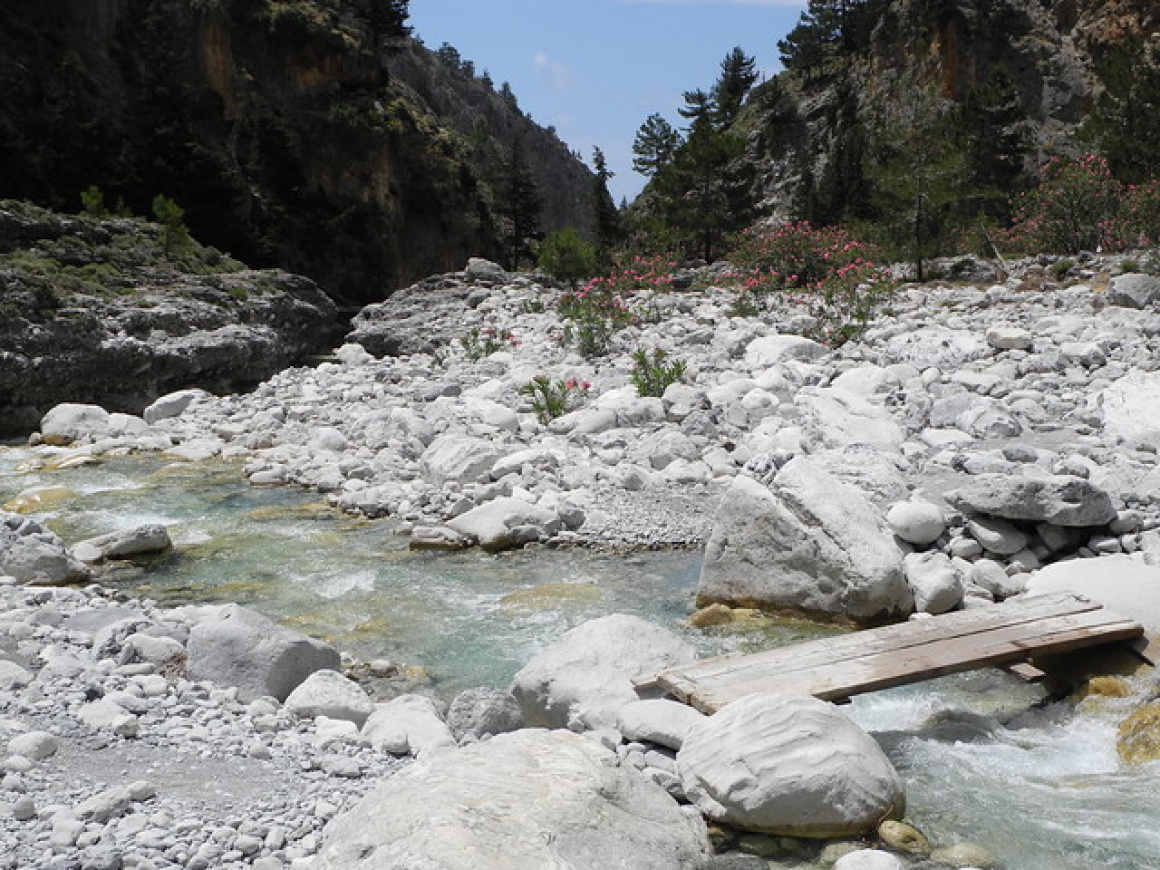
 'Samaria gorge' - Attribution: Shepard4711
'Samaria gorge' - Attribution: Shepard4711Above all, take time to imagine. Crete's sites are often not fully reconstructed (with the exception of parts of Knossos), which actually gives you the space to picture the scenes yourself. In the ruins of a Minoan villa at Gournia, imagine a Minoan family preparing dinner from clay cooking pots. In the stone seats of the theatre at Aptera, picture a Hellenistic audience watching a play. Under the plane tree at Gortyn, imagine a Cretan scribe chiseling out laws that would govern marriages and property rights. Crete's archaeological sites are as immersive as you allow them to be.


